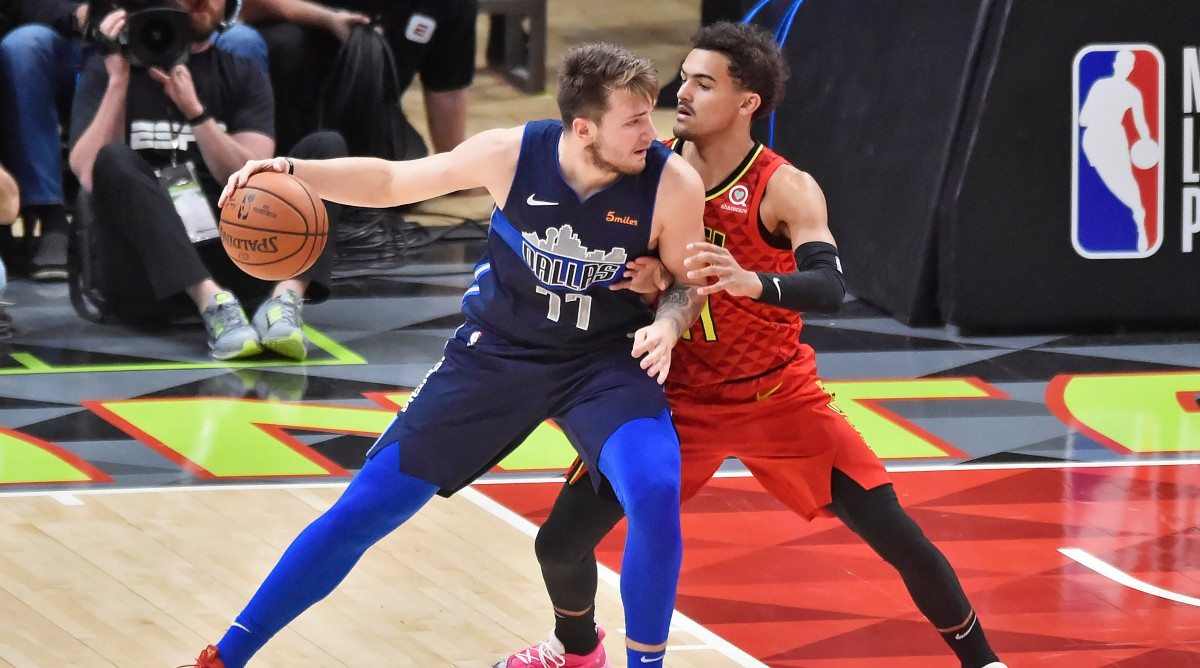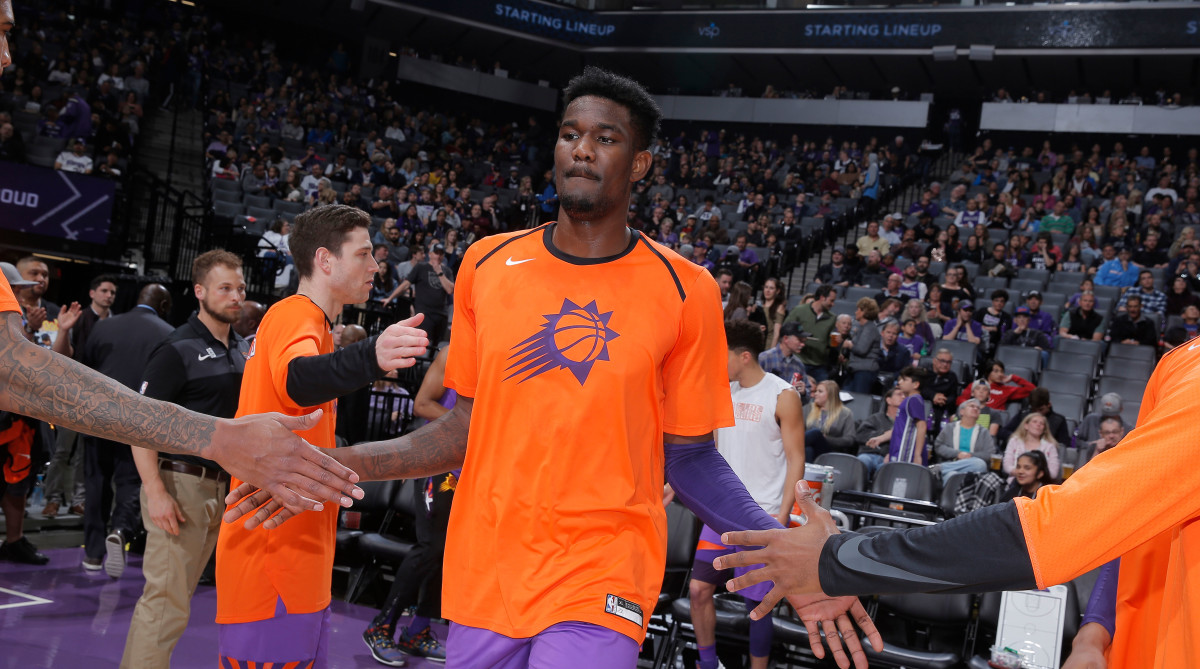Sophomore Check-In: Assessing Expectations for Luka Doncic, Trae Young in Year 2

The 2018-19 rookie class showed plenty of promise last season as Luka Doncic and Trae Young jockeyed for the Rookie of the Year award. Shai Gilgeous-Alexander was the jewel of Oklahoma City’s Paul George trade, and Jarren Jackson Jr. is poised to become half of NBA Twitter’s favorite young duo alongside Ja Morant. And we’ve yet to mention last year’s top two picks, Deandre Ayton and Marvin Bagley, both of whom showed serious offensive promise despite bouts of inconsistency. Last year’s class lived up to its considerable hype.
We should celebrate the rookie accomplishments of Doncic and Co., but a strong first year isn’t always an indicator of future success. So what should we expect for the upcoming class of sophomores in 2019-20? We at The Crossover previewed the road ahead three months before opening night.

Luka Doncic, Mavericks
Rookie Report: Doncic’s rookie season was among the most fun in recent memory, filled with clutch jumpers and lethal snapbacks. The Slovenian may have an unsculpted body, but his play is polished beyond his years. It’s a touch maddening in retrospect the degree to which Doncic was questioned in the draft process. He was the most accomplished teenager in European basketball history, did we really think he couldn’t handle playing at the next level? Doncic cruised to the Rookie of the Year despite a late push from Trae Young. He could make another leap in Year 2.
The Next Step: The largest question still surrounding Doncic is his ceiling. Skeptics claim Doncic is already close to his NBA peak, with plenty of miles on his career odometer. Doncic is anything but a physical marvel, and his athleticism will only wane in coming years. Can Doncic be dominant enough to earn first-team All-NBA honors?
We’ll save such expectations for a few years down the road, but the bar will be raised for Doncic this season. The addition of Kristaps Porzingis has created a playoffs-or-bust mentality in the Metroplex, and even in the varsity conference, anything but a postseason appearance will likely be deemed a failure. Doncic was ahead of the pack as a rookie. Let’s see if he can remain atop his draft class by July 2020.
Trae Young, Hawks
Rookie Report: Young’s uneven year ended in satisfying fashion as he closed the season with 24.0 points and 9.3 assists per game in his last 20 contests. Young didn’t appear overwhelmed by NBA length in his first season, earning cleaner looks than his 32.4% mark from three would suggest. His efficiency should see an uptick in year two.
Young entered his rookie year as a dead-eye shooter, but he exited the season as one of the league’s most inventive passers. Young is wise beyond his years as a pick-and-roll ball handler. He probes with the patience of Mike Conley, then rifles the ball the second he catches a defense leaning. Young can skip the ball to any corner of the court, even with his off hand. His feathery touch on lobs is pristine–elegant teardrops fall into the arms of John Collins and Alex Len. Young was a gunner by necessity at Oklahoma. He was a brilliant rookie maestro in Atlanta.
The Next Step: Let’s see Young truly make teams pay from beyond the arc. His playmaking is elite for his age, and he’ll frankly be a defensive sieve for the rest of his career. Young will need to emulate Damian Lillard and Steph Curry for Atlanta to make a leap in the next decade. Simple flashes of the Western Conference superstars will suffice in year two.

Deandre Ayton, Suns
Rookie Report: Let’s use this space to address the good news: Deandre Ayton can really score. He is one of three rookies since 2000 to average 16 points and 10 rebounds per game, and of the 16 players to accomplish the feat since 1980, none posted a better effective field goal percentage than Ayton. Phoenix’s top pick was historically efficient as a rookie, and the numbers were no fluke. Ayton is mobile and versatile, comfortable both as a ball-handler and with his back to the basket. Phoenix has plenty of question marks, but Ayton and Devin Booker should prove to be a pretty strong offensive combo regardless.
The Next Step: Now to the bad news: Deandre Ayton can’t really defend anyone. Darren Collison ankle breakers aside, Ayton was torched really wherever he went on the floor. He struggled to contain in space and was in foul trouble down low. His help defense appeared more predicated on shot blocking than true deterrence, leaping out of position to a frustrating degree. We shouldn’t crush Ayton for his defensive deficiencies just yet. It’s hard to be a big man in the modern NBA, and a teenager with limited experience is likely to struggle. But we need to see signs of encouragement in year two.
Jarren Jackson Jr., Grizzlies
Rookie Report: JJJ has arguably as much upside as any player in his draft class, and his booming potential was on display in flashes as a rookie. Jackson is built to thrive as a modern big. He’s a high flyer above the rim and a dangerous downhill roller, and he shot a respectable 35.9% from three on 2.4 attempts per game. Jackson can even shake a defender on the perimeter, showing off impressive handles and a low center of gravity. His versatility will serve him well next season. There may be some growing pains without Mike Conley, but Jackson and Morant should be thrilling to watch in the 2020s.
The Next Step: Defensive discipline will be key for Jackson as he enters his second season. Jackson engaged in a hack fest on most nights last season, battling foul trouble on a slew of bad reaches, bites on pump fakes and compromised verticality. Of the 276 players to log at least 1,000 minutes last season, only four committed more fouls per 100 possessions. The free points add up. Ultimately, the knock on Jackson’s foul rate is more a nitpick than anything. Additional years in the league should improve his foul rate, and the concern is secondary to his potential All-Star future. Buy Jackson stock fast. If Morant is the real deal, Memphis could be in for an impressive follow-up to the Grit-N-Grind era.
QUICK HITTERS
Marvin Bagley III, Kings: Expect Bagley’s range to expand in year two. If he can convert a better percentage from beyond the arc, we may be looking at the biggest growth of any player across two seasons. Bagley is a gifted offensive talent with a smooth jumper and physical tools to command the paint. Few players have a better second jump. Bagley should spend time at the five despite Sacramento’s crowded center rotation. At the very least, we need to end the experiment with him at the three.
Shai Gilgeous-Alexander, Thunder: SGA certainly fits the mold of a Sam Presti player. Gilgeous-Alexander’s arms sometimes appear to extend halfway past the paint, fitting right into the Thunder archetype of long, aggressive defenders. His defensive chops will make him valuable for the next decade. Enough offensive improvement could vault him into All-Star consideration down the line. Learning under Chris Paul should help hone his instincts, and further patience probing the defense could pay dividends. The game should slow down as Gilgeous-Alexander continues his sophomore season. Presti should be optimistic about his pickup in the Paul George trade.
Collin Sexton, Cavaliers: Good on Sexton for overcoming the criticism of his shot selection early last season. The Alabama product struggled for sizable stretches last year—the defensive end was a disaster—but his passing instincts were solid throughout. His vision is a plus, and he appeared more comfortable with the NBA three as the season wore on. Sexton’s team isn’t doing him any favors. The jury is still out.
